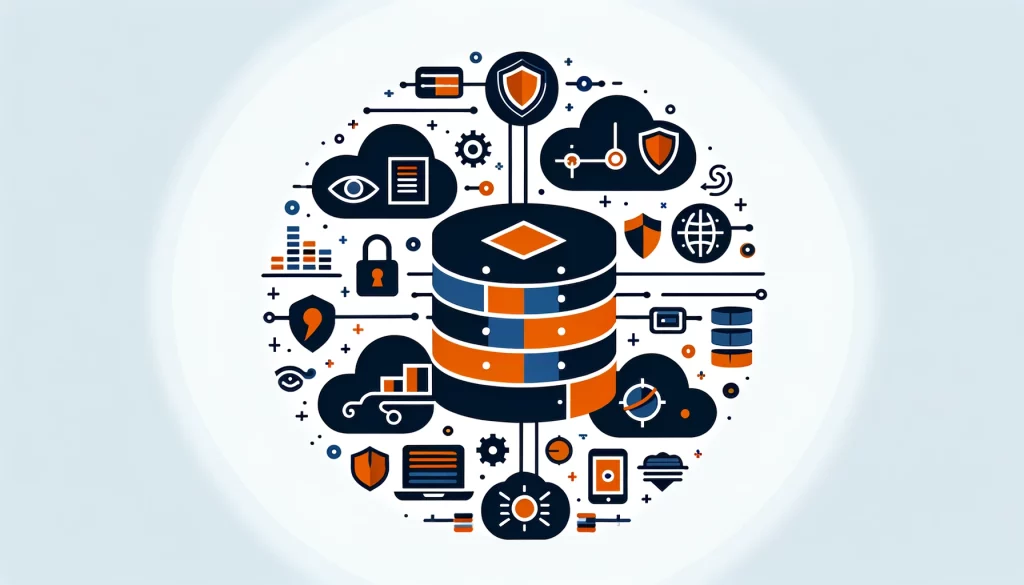
Protecting Your Data with Data Loss Prevention (DLP)

Introduction
In today’s digital world, data is one of the most valuable assets for any organization. Companies gather a lot of important data, like customer credit card numbers and trade secrets, and keep it safe. Keeping this data safe is crucial because exposing it can result in significant financial losses and complications. This is where Data Loss Prevention (DLP) comes in.
DLP is a system that stops unauthorized use, sharing, or revealing of sensitive data through tools and processes. In this article, we’ll explore what DLP is, how it works, and why it’s essential for data security.
What is Data Loss Prevention?
Data Loss Prevention is a strategy that combines technology solutions and best practices to identify, monitor, and protect an organization’s sensitive data. DLP aims to prevent data breaches, whether they occur accidentally or maliciously, by employees or external parties.
If a worker tries to send a secret file outside the company, the DLP system can stop it and notify admins.
Key Features of Data Loss Prevention Solutions
Comprehensive DLP solutions typically include the following key features:
- Data discovery and classification: DLP tools scan an organization’s network, endpoints, and cloud storage to locate sensitive data. They then classify the data based on predefined categories like personally identifiable information (PII), protected health information (PHI), and intellectual property.
- Policy creation and enforcement: Administrators can establish specific rules for using and sharing various data. For example, a policy might block the transfer of credit card numbers via instant messaging. DLP systems enforce these policies in real-time.
- Monitoring and alerting: DLP solutions continuously monitor data usage and movement across an organization’s IT environment. If a policy violation occurs, the system generates alerts for administrators to investigate and remediate.
- Incident response and reporting: DLP tools help manage data loss incidents by providing steps for containment, investigation, and response. They also generate detailed reports for compliance audits and risk assessments.
Preventing Insider Threats
One of the biggest data security risks organizations face comes from inside: their own employees. Because of negligence or malicious intent, insiders are responsible for a significant portion of data breaches. DLP helps mitigate this risk by monitoring user activity and enforcing policies on data handling.
For example, imagine an employee attempts to copy a customer database to a personal USB drive. A DLP system would detect this unauthorized action, block the data transfer, and alert the security team.
Compliance and Data Protection Regulations
More companies are using DLP because of data protection laws like the GDPR in the EU and the CCPA in California. These laws are increasing in number worldwide. This is an important reason for the rise in DLP usage.
These laws mandate strict requirements for safeguarding personal data. Failure to comply can result in hefty fines and legal action. DLP solutions ensure organizations meet these compliance obligations by properly classifying, monitoring, and securing sensitive data throughout its lifecycle.
For example, under GDPR, companies can only collect and use personal data for specific, legitimate purposes with user consent. A DLP tool can enforce rules to prevent personal data misuse under GDPR regulations.
This tool can stop unauthorized use or sharing of personal data. It ensures compliance with GDPR rules. It can also provide audit trails to demonstrate compliance during regulatory inspections.
Real-World Data Loss Prevention Examples
To illustrate the value of DLP, let’s look at a couple real-world examples:
Preventing Data Exfiltration: Suppose an employee of a financial services firm decides to quit and join a competitor. Before they go, they attempt to send a list of important clients to their personal email.
The system identifies, prevents, and notifies the security team of the attempted breach of policy on the email.
Protecting PHI in Healthcare
A hospital uses a DLP solution to protect patient records and follow HIPAA regulations.
The DLP tool discovers and classifies all electronic protected health information (ePHI) across the hospital’s network. Organizations implement policies to restrict access to ePHI and prevent insecure transmission.
The system prevents sending private health information through insecure email routes.
The doctor must use the hospital’s secure messaging system instead of breaking the rules. The DLP solution helps the hospital avoid expensive data breaches and penalties by following HIPAA-compliant data handling practices.
Conclusion
In conclusion, Data Loss Prevention is a critical component of any comprehensive data security strategy. By identifying, monitoring, and protecting sensitive information, DLP solutions help organizations prevent costly data breaches, meet compliance requirements, and maintain customer trust. As the volume and value of data continue to grow, so does the importance of effective DLP.
However, implementing a successful DLP program requires more than just technology. It involves making rules for data use, training employees on safety, and ensuring everyone is aware of security measures.
Companies need to assess their data protection needs and select a DLP solution that fits their goals and IT setup.
If you need great tools for managing data, like security and compliance features, check out DataSunrise. For more information, you can request an online demo session.
